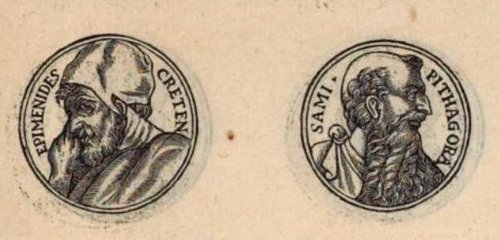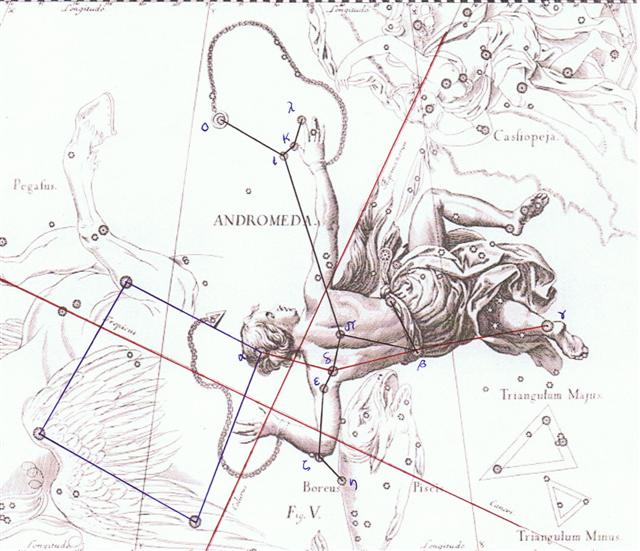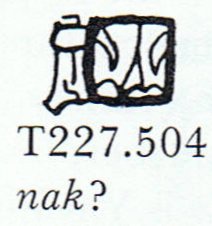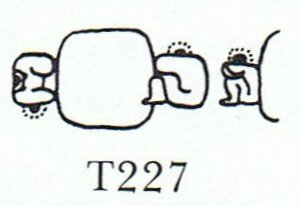477. A topknot of hair should be at the top
of the head, and so it clearly would have been around
100 right ascension days earlier, when the Square of
Pegasus had been at the northern winter solstice.
...
But
little Maui
stood up for himself. 'Well then, I'd better go, I
suppose', he said. 'Since you say so, I must be
someone else's child. But I did think I was yours,
because I know I was born at the edge of the sea,
and you cut off a tuft of your hair and wrapped me
in it and threw me in the waves. After that the
seaweed took care of me and I drifted about in the
sea, wrapped in long tangles of kelp, until a breeze
blew me on shore again, and some jelly-fish rolled
themself around me to protect me on the sandy beach.
Clouds of flies settled on me and I might have been
eaten up by the maggots; flocks of seabirds came,
and I might have been pecked to pieces. But then my
great-ancestor Tama nui ki te rangi arrived.
He saw the clouds of flies and all the birds, and he
came and pulled away the jelly-fish, and there was
I, a human being! Well, he picked me up and washed
me and took me home, and hung me in the rafters in
the warmth of the fire, and he saved my life. And I
grew, and eventually I heard about the dancing
you have here in this house, and that is what
brought me here tonight ...

At the opposite side there was a knot of cloth, we can
see from the head of Pythagoras, and this must similarly
anciently have been at the bottom but had now
been uplifted to be at the back of the head (180º
away from the knot of hair), and in the C text we
can look for the southern autumn equinox in March 21
(80) and then go back 100 days to search for its
ancient position.
|
no glyph |
koia |
ki te hoea |
ki te henua |
te rima te hau tea |
haga i te mea ke |
ki te henua - tagata
honui |
|
Hoe.
Hoe 1.
Paddle. Mgv.: hoe, ohe,
id. Mq., Ta.: hoe, id. 2. To
wheeze with fatigue (oeoe 2).
Arero oeoe, to stammer, to stutter;
Mgv. oe, to make a whistling
sound in breathing; ohe, a cry
from a person out of breath. Mq.: oe,
to wheeze with fatigue. 3. Blade, knife;
hoe hakaiu, clasp-knife,
jack-knife; hoe hakanemu,
clasp-knife; hoe pikopiko,
pruning knife. 4. Ta.: oheohe, a
plant. Ma.: kohekohe, id.
Churchill.T. Paddle. E hoe te heiva
= 'and to paddle (was their) pleasure'.
Henry. Hoea, instrument for
tattooing. Barthel. |
 |
 |
 |
 |
 |
 |
|
Ca1-1 |
Ca1-2 |
Ca1-3 |
Ca1-4 |
Ca1-5 |
Ca1-6 |
|
CLOSE TO THE FULL MOON: |
|
March 21 (80)
Al Fargh al Thāni-25 (Rear Spout)
0h (365.25)
CAPH (Hand) =
β
Cassiopeiae,
SIRRAH (Navel of the Horse) =
α
Andromedae
(0.5),
ε
Phoenicis,
γ³
Oct.
(0.8) |
22
Uttara Bhādrapadā-27 (2nd of the Blessed
Feet) /
Wall-14 (Porcupine)
ο Oct. (1.3),
ALGENIB PEGASI = γ Pegasi
(1.8) |
23
χ Pegasi (2.1), θ Andromedae (2.7) |
24
σ Andromedae (3.0), ι Ceti (3.3), ζ
Tucanae (3.5), ρ Andromedae, π Tucanae
(3.7) |
Julian
equinox
no
star listed (4) |
26 (85 = 185 - 100)
ANKAA = α Phoenicis,
κ Phoenicis (5.0)
ALPHARD (α
Hydrae)
|
27
λ Phoenicis (6.3), β Tucanae (6.4)
45.0 = 86.4 - 41.4 |
 |
|
CLOSE TO THE SUN: |
|
Sept 20 (263) |
21 |
Equinox |
23 |
24 |
25 |
26 |
|
ALCHITA = α Corvi,
MA WEI (Tail of the Horse) = δ Centauri
(183.1),
MINKAR = ε Corvi
(183.7), ρ Centauri (183.9) |
PÁLIDA (Pale) =
δ
Crucis
(184.6),
MEGREZ (Root of the Tail) =
δ
Ursae Majoris
(184.9) |
Hasta-13 (Hand) /
Chariot-28 (Worm)
GIENAH (Wing) =
γ
Corvi
(185.1),
ε
Muscae (185.2),
ζ
Crucis (185.4),
ZANIAH (Corner) = η Virginis
(185.9)
*144.0 = *185.4 - *41.4 |
CHANG SHA
(Long Sand-bank) = ζ Corvi
(186.3) |
INTROMETIDA (Inserted) =
ε
Crucis
(187.4),
ACRUX =
α
Crucis
(187.5)
*146.0 = *187.4 - *41.4 |
γ
Com. Berenicis (188.0),
σ
Centauri (188.1),
ALGORAB =
δ
Corvi
(188.5),
GACRUX =
γ
Crucis
(188.7) |
γ
Muscae (189.0),
AVIS SATYRA (Bird of the
Satyrs) =
η
Corvi
(189.3),
ASTERION (Starry) =
β
Canum Ven.
(189.5),
KRAZ = β Corvi,
κ Draconis (189.7) |

... Raven gazed up and down the beach.
It was pretty, but lifeless. There was
no one about to upset, or play tricks
upon. Raven sighed. He crossed his wings
behind him and strutted up and down the
sand, his shiny head cocked, his sharp
eyes and ears alert for any unusual
sight or sound. The mountains and the
sea, the sky now ablaze with the sun by
day and the moon and stars he had placed
there, it was all pretty, but lifeless.
Finally Raven cried out to the empty sky
with a loud exasperated cry. And before
the echoes of his cry faded from the
shore, he heard a muffled squeak. He
looked up and down the beach for its
source and saw nothing. He strutted back
and and forth, once, twice, three times
and still saw nothing. Then he spied a
flash of white in the sand. There, half
buried in the sand was a giant
clamshell. As his shadow fell upon it,
he heard another muffled squeak. Peering
down into the opening between the halves
of the shell, he saw it was full of tiny
creatures, cowering in fear at his
shadow ... |
This will
bring us to the central part of the Moon calendar,
where at the beginning of its
4th (→ unlucky) period there is a little bird with
rounded bottom like those at the beginnning of the
other 7 such periods - however in contrast to the 7
others this one has a black eye:
|
178 |
tagata - marama |
tagata |
kua moe |
puhi te ahi - rave i
te ika |
|
Puhi. 1. To
blow; to light a fire; to extinguish, to
blow out; he-puhi te umu, to
light the fire for the earth oven. 2. To
fish for lobsters at night using a bait
(but during the day one calls it hî);
puhiga, night fishing spot.
Vanaga. To blow; puhi mai, to
spring up; pupuhi, wind, fan, to
blow, puffed up, to blow fresh, to
ferment, to swell, to bloat, to spring
out, to gush, yeast; pupuhi vai,
syringe; pupuhi eve, squirt;
pupuhi heenua, volley; pupuhi
nunui, cannon; pupuhi nui,
swivel gun; ahuahu pupuhi,
amplitude; vai pupuhi, water
which gushes forth; pupuhihia, to
carry on the wind; hakapupuhi, to
gush, leaven, volatilize; puhipuhi,
to smoke, to smoke tobacco, a pipe.
Churchill. |
 |
 |
 |
 |
|
Maharu
Ca7-17 (185) |
Ohua
Ca7-18 |
Otua
Ca7-19 |
- |
|
Ca7-20 |
|
Haru.
Haruharu.
To rob, to steal, to arrest, to seize,
to cling, to grasp unexpectedly, to take
by force; robber (aruaru, aaru).
Pau.: haru, to extort, to carry
off, to usurp. Ta.: haru, robber,
to seize by force. Churchill. |
|
CLOSE TO THE FULL MOON: |
|
Equinox |
Sept 23 (266) |
24 |
25 |
|
Hasta-13 (Hand) /
Chariot-28 (Worm)
GIENAH (Wing) =
γ
Corvi
(185.1),
ε
Muscae (185.2),
ζ
Crucis (185.4),
ZANIAH (Corner) = η Virginis
(185.9)
*144.0 = *185.4 - *41.4 |
CHANG SHA
(Long Sand-bank) = ζ Corvi
(186.3) |
INTROMETIDA (Inserted) =
ε
Crucis
(187.4),
ACRUX =
α
Crucis
(187.5)
*146.0 = *187.4 - *41.4 |
γ
Com. Berenicis (188.0),
σ
Centauri (188.1),
ALGORAB =
δ
Corvi
(188.5),
GACRUX =
γ
Crucis
(188.7) |

...
Three representations of a deity smoking a
tubular pipe appear on Madrid pages 86-87b. The
initial glyger in the accompanying text is
T227:504; Seler pointed out that this glyger
probably meant 'smoking'. T227 is a seated man;
nak in Tzotzil is 'to sit'; the second
glyph is the well-known glyph for 'night',
Yucatec akbal.


Knorozov ... reads T227 as nak, citing
only Yucatec nak 'belly'. For the
combination T227:561:23, Knorozov ... read
nak chaan, citing Motul nak caan
'capa del cielo' ('layer of heaven'), a
plausible reading.
T504, the akbal glyph, is read by
Knorozov simply ak. Cordan ... follows
this reading completely, giving nakak 'to
smoke'. This seems to be entirely a derived
meaning, for which he cites the comparative
evidence of Yucatec nakba 'to burn' and
Chontal nuk'um 'he smokes'. If the latter
is due to assimilation from an earlier *nak'um,
it would certainly support the reading of T227
as nak, although not necessarily the
interpretation of T504 as ak. Tzeltal
nak' 'to hide' may account for the use of
this glyph in astronomical contexts, where it
may indicate occultation
...
|
te kava - erua marama |
e marama noho i tona
nohoga |
te hare pure e tagata
noho ki roto |
|
Hare.
House, family,
home. Vanaga. House, cabin, habitation,
building, hut, structure; hare iti,
hut; hare itiiti no,
cabin; hare kahu, tent; hare
neinei, latrine; hare no iti,
cell; hare nunui, palace; hare
pohurihuri, prison; hare pure,
chapel, church; ki te hare, at
home. Harepepe, kelp. Harepiko,
a. asylum, place of refuge; b. ambush,
snare. Harepopo, shed.
Harepopokai, storehouse. Churchill.
Pure. Cowrie (Cypraea
caput draconis); pure vaka,
another type of cowrie, which can float
on the sea like a diminutive boat (vaka).
Vanaga. 1. To pray, to supplicate,
invocation, prayer; hare pure,
church, chapel; tae pure,
irreverence; purega, prayer P
Pau., Mgv., Mq., Ta.: pure, to
pray. In Samoa, Tonga, Niuē,
Futuna, Uvea, pule
means to command. 2. A shell T. P
Pau.: hakapurepure, to dye, to
color. Mq.: pué, the porcelain
shell. Ta.: pure, a mark.
Purepure, spotted, dappled; ragi
purepure, dappled sky. Purepurea,
spotted. P Pau.: hakapurepure, to
dye, to color. Mgv.: purepure,
printed cloth; akapurepure, to
paint in different colors. Mq.:
puépué, covered with pale scars.
Ta.: purepure, spotted, dappled.
Churchill.
Pureva,
rock, stone (small enough to be thrown
by hand). Vanaga.
Pureva,
to throw a stone. Ta.:
Pureva,
to be on the eve of going. Ha.:
puleva,
to float here and there. Churchill.
Pau.: Pure-hiva, a butterfly.
Mgv.: pure-rehue, id. Ta.:
pure-hua, a moth. Mq.: pure-hua,
id. Ma.: pure-hua, id. Churchill. |
 |
 |
 |
 |
|
Maúre
Ca7-21 |
Ina-ira
Ca7-22 → π |
Rakau
Ca7-23 → 216 = 3 / 5 * 365 |
Omotohi
Ca7-24 (192) |
|
Sept 26 |
27 (270) |
28 |
29 (2 * 136) |
|
γ
Muscae (189.0),
AVIS SATYRA (Bird of the
Satyrs) =
η
Corvi
(189.3),
ASTERION (Starry) =
β
Canum Ven.
(189.5),
KRAZ = β Corvi,
κ Draconis (189.7) |
α Muscae (190.2), τ Centauri (190.5), χ
Virginis (190.7)
ALDERAMIN (α
Cephei)
|
Al Áwwā'-11 (The Barker) /
Shur-mahrū-shirū-18 (Front or West Shur)
Sombrero Galaxy = M104 Virginis
(191.1),
ρ
Virginis (191.4),
PORRIMA =
γ
Virginis,
γ
Centauri (191.5)
*150.0 = *191.4 - *41.4 |
ι Crucis (192.2), β Muscae (192.5),
MIMOSA = β Crucis
(192.9) |
The Full Moon glyph (only a
single line around in contrast to the broad
daylight band for the Sun) corresponds to the
night of the full moon (Hotu), although
Omo-tohi means the night when the sucking
(omo) is ending (tohi) - because
then the Waning phase is due to arrive.
... 'My
child', said Makea now in a tone of
deep sorrow, 'there has been a bad omen for
us. When I performed the tohi
ceremony over you I missed out a part of the
prayers. I remembered it too late. I am
afraid this means that you are going to
die.' 'What's she like, Hine nui te Po?'
asked Maui. 'Look over there', said
Makea, pointing to the ice-cold
mountains beneath the flaming clouds of
sunset. 'What you see there is Hine nui,
flashing where the sky meets the earth. Her
body is like a woman's, but the pupils of
her eyes are greenstone and her hair is
kelp. Her mouth is that of a barracuda, and
in the place where men enter her she has
sharp teeth of obsidian and greenstone.'
Rakau at Porrima could
mean this place was at the opposite side of the
Breast (in Cassiopeia) - for rakau is a
tree (or pole) and inside the boat we can imgine
the outline of a breast.
At the beginning of the Milky Way
there was likewise a ship (the Cargo Boat)
waiting in order to take onboard a dark
passanger, transporting him across the 4th
quarter to
the beginning of a new Land:

... The myth goes on to tell of
the blessed boat's arrival in the marshes of the
Delta, and of how Set, one night hunting the
boar by the light of the full moon, discovered
the sarcophagus and tore the body into fourteen
pieces, which he scattered abroad; so that, once
again, the goddess had a difficult task before
her. She was assisted, this time, however, by
her little son Horus, who had the head of a
hawk, by the son of her sister Nephtys, little
Anubis, who had the head of a jackal, and by
Nephtys herself, the sister-bride of their
wicked brother Set. Anubis, the elder of the two
boys, had been conceived one very dark night, we
are told, when Osiris mistook Nephtys for Isis;
so that by some it is argued that the malice of
Set must have been inspired not by the public
virtue and good name of the noble culture hero,
but by this domestic inadventure. The younger,
but true son, Horus, on the other hand, had been
more fortunately conceived - according to some,
when Isis lay upon her dead brother in the boat,
or, according to others, as she fluttered about
the palace pillar in the form of a bird.
The four bereaved and
searching divinities, the two mothers and their
two sons, were joined by a fifth, the moon-god
Thoth (who appears sometimes in the form of an
ibis-headed scribe, at other times in the form
of a baboon), and together they found all of
Osiris save his genital member, which had been
swallowed by a fish. They tightly swathed the
broken body in linen bandages, and when they
performed over it the rites that thereafter were
to be continued in Egypt in the ceremonial
burial of kings, Isis fanned the corpse with her
wings and Osiris revived, to become the ruler of
the dead. He now sits majestically in the
underworld, in the Hall of the Two Truths,
assisted by forty-two assessors, one from each
of the principal districts of Egypt; and there
he judges the souls of the dead. These confess
before him, and when their hearts have been
weighed in a balance against a feather, receive,
according to their lives, the reward of virtue
and the punishment of sin ...

|















